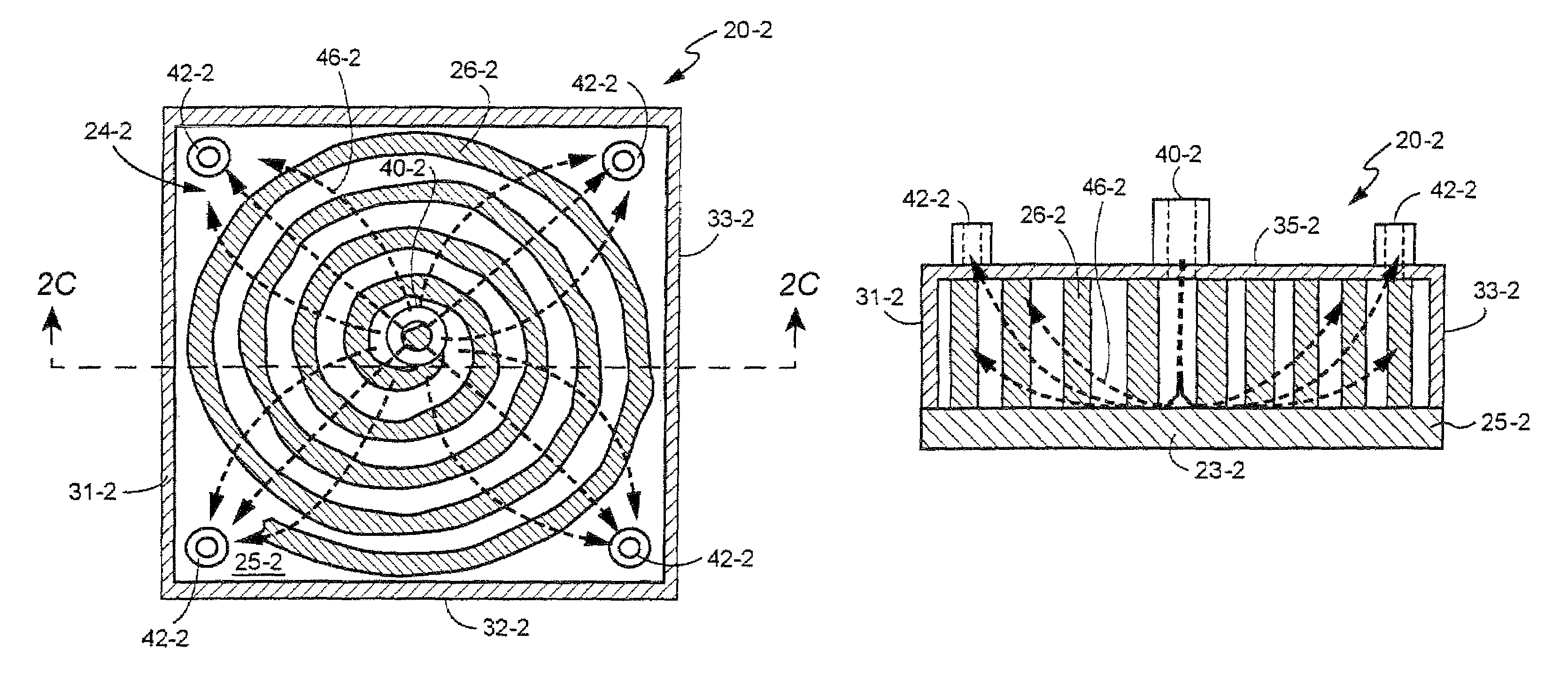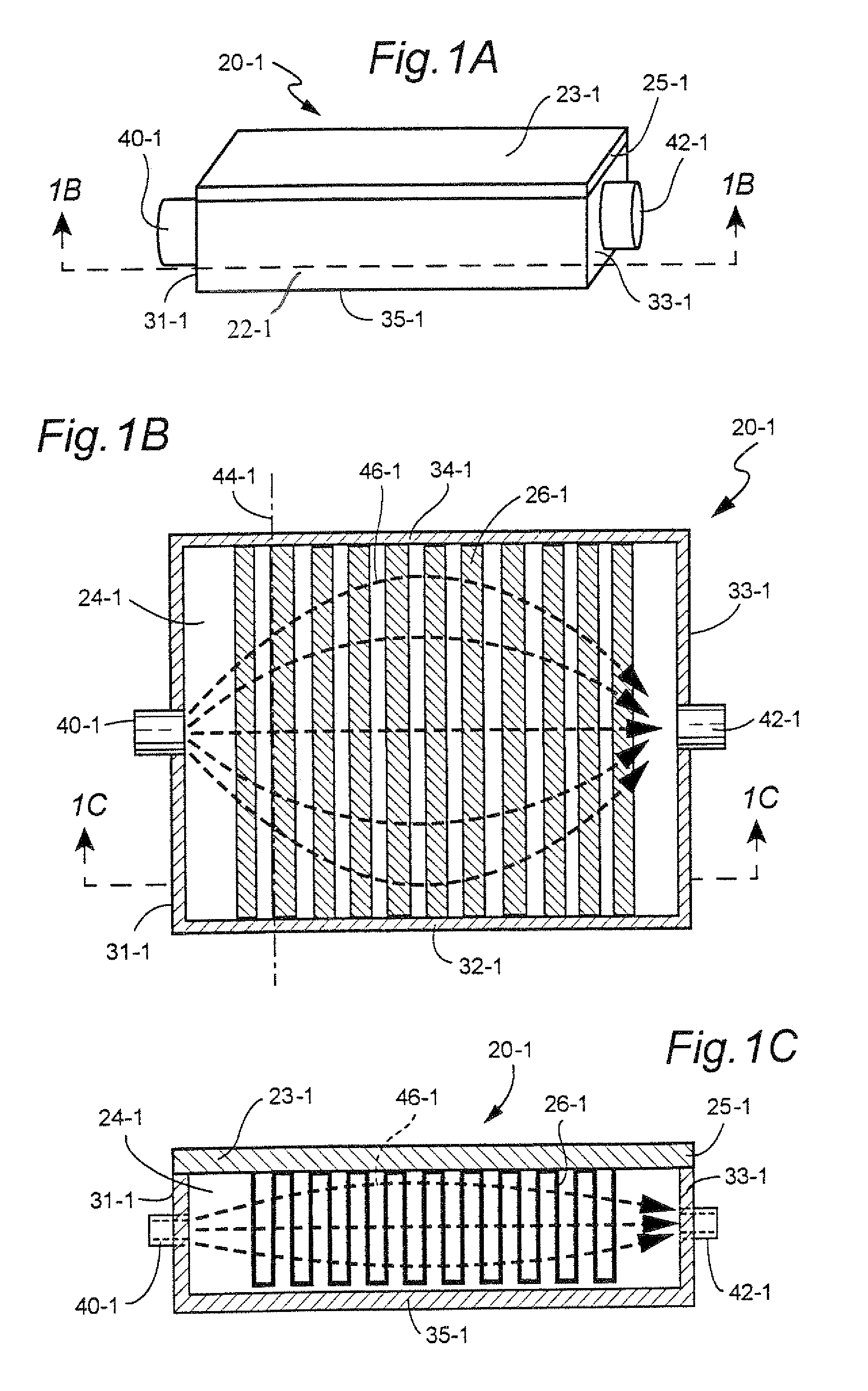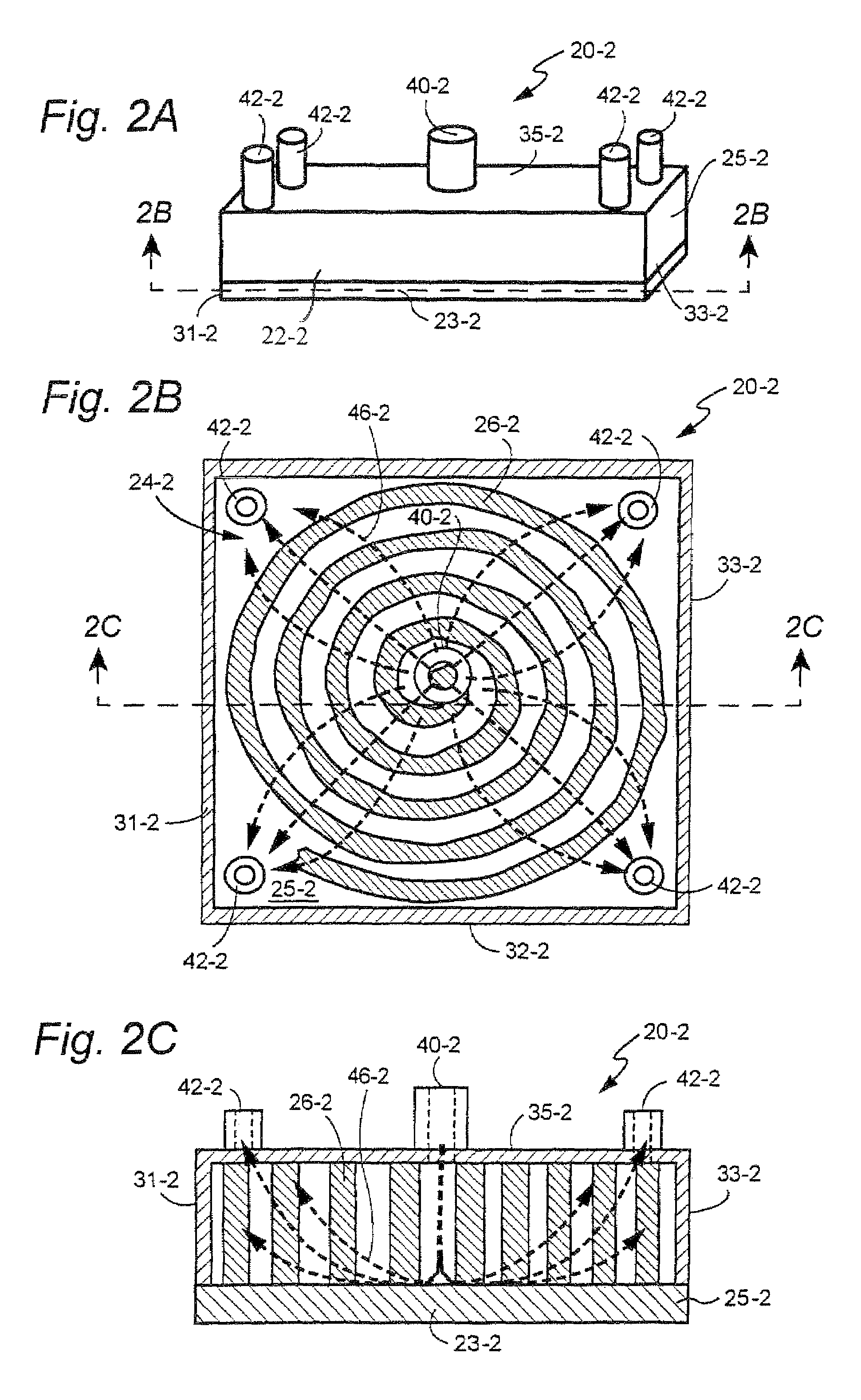Thermal transfer devices with fluid-porous thermally conductive core
a technology of thermal conductors and transfer devices, which is applied in the direction of insulated conductors, semiconductor/solid-state device details, cables, etc., can solve the problems of insufficient effectiveness of conventional cooling methods, inconvenient pumping, and injurious to equipment or its environment, so as to reduce the size and power of the pump, and facilitate fluid push. , the effect of less pressure drop
- Summary
- Abstract
- Description
- Claims
- Application Information
AI Technical Summary
Benefits of technology
Problems solved by technology
Method used
Image
Examples
first embodiment
[0071]In like manner as some of the other embodiments illustrated herein, the cover 22-1 is essentially a parallelepiped. In fact, the cover 22-1 of the first embodiment is a rectangular parallelepiped having one open face. As such, the cover 22-1 has five walls. The walls of the cover 22-1 include side walls 31-1, 32-1, 33-1, and 34-1, as well as cover wall 35-1. The cover wall 35-1 lies in a plane which is parallel to thermal transfer base 25-1. When the thermal transfer device is assembled, the open face of cover 22 is closed by thermal transfer base 25-1. FIG. 1A, FIG. 1B, and FIG. 1C show the thermal transfer device 20-1 with thermal transfer base 25-1 surmounting the cover 22-1.
[0072]The thermal transfer base 25-1 can be secured to cover 22 by any suitable fasteners or adhesives such as, e.g., threaded fasteners. FIG. 1B shows the interior of the chamber looking up from cover wall 35-1 toward the underside of thermal transfer base 25-1, thereby also permitting a view of the th...
third embodiment
[0088]As in the other embodiments, the thermal mesh structure 26-3 is situated in the chamber 24-3 to transfer thermal energy acquired from the thermal transfer base 25-3 to the fluid in the chamber 24-3 as the fluid first impinges upon thermal transfer base 25-3 and then is pumped through interstices of the thermal mesh structure 26-3. As mentioned previously, preferably the thermal mesh structure is formed integrally with or bonded to the thermal transfer base 25-3 (e.g., diffusion bonded in the same or different operation in which the wires of the thermal mesh structure are bonded). As shown in FIG. 3C, the thermal mesh structure 26-3 of the third embodiment has an essentially circular configuration within the chamber, and preferably is configured to comprise plural concentric rings within the chamber.
[0089]FIG. 3D shows a variation of the third embodiment in which inlet 40-3 of the housing is an opening through which a nozzle 47 extends. In particular, nozzle 47 extends through ...
fourth embodiment
[0094]Although the mating of cover 22-4 and base assembly 23-4 is not illustrated for the fourth embodiment, it will be appreciated that cover 22-4 fits over base assembly 23-4 to define a chamber in similar manner as previously described embodiments. To this end, fastener holes are provided in aligned fashion proximate corners of both thermal transfer base 25-4 and cover 22-4. The cover 22-4 is essentially a square parallelepiped having an open face and has five walls including side walls 31-4, 32-4, 33-4, and 34-4, as well as cover wall 35-4. The cover 22-4 fits over thermal transfer base 25-4.
[0095]In the fourth embodiment, the cover wall 35-4 of cover 22-4 includes both a single inlet 40-4, as well as plural (e.g., four) outlets 42-4 (see FIG. 4D). In the illustrated version of the second embodiment, the single inlet 40-4 is centrally located, while each of the four outlets 42-4 are situated in (e.g., proximate) a separate corner of cover wall 35-4. The inlet 40-4 communicates t...
PUM
| Property | Measurement | Unit |
|---|---|---|
| diameter | aaaaa | aaaaa |
| diameter | aaaaa | aaaaa |
| diameter D40 | aaaaa | aaaaa |
Abstract
Description
Claims
Application Information
 Login to View More
Login to View More - R&D
- Intellectual Property
- Life Sciences
- Materials
- Tech Scout
- Unparalleled Data Quality
- Higher Quality Content
- 60% Fewer Hallucinations
Browse by: Latest US Patents, China's latest patents, Technical Efficacy Thesaurus, Application Domain, Technology Topic, Popular Technical Reports.
© 2025 PatSnap. All rights reserved.Legal|Privacy policy|Modern Slavery Act Transparency Statement|Sitemap|About US| Contact US: help@patsnap.com



